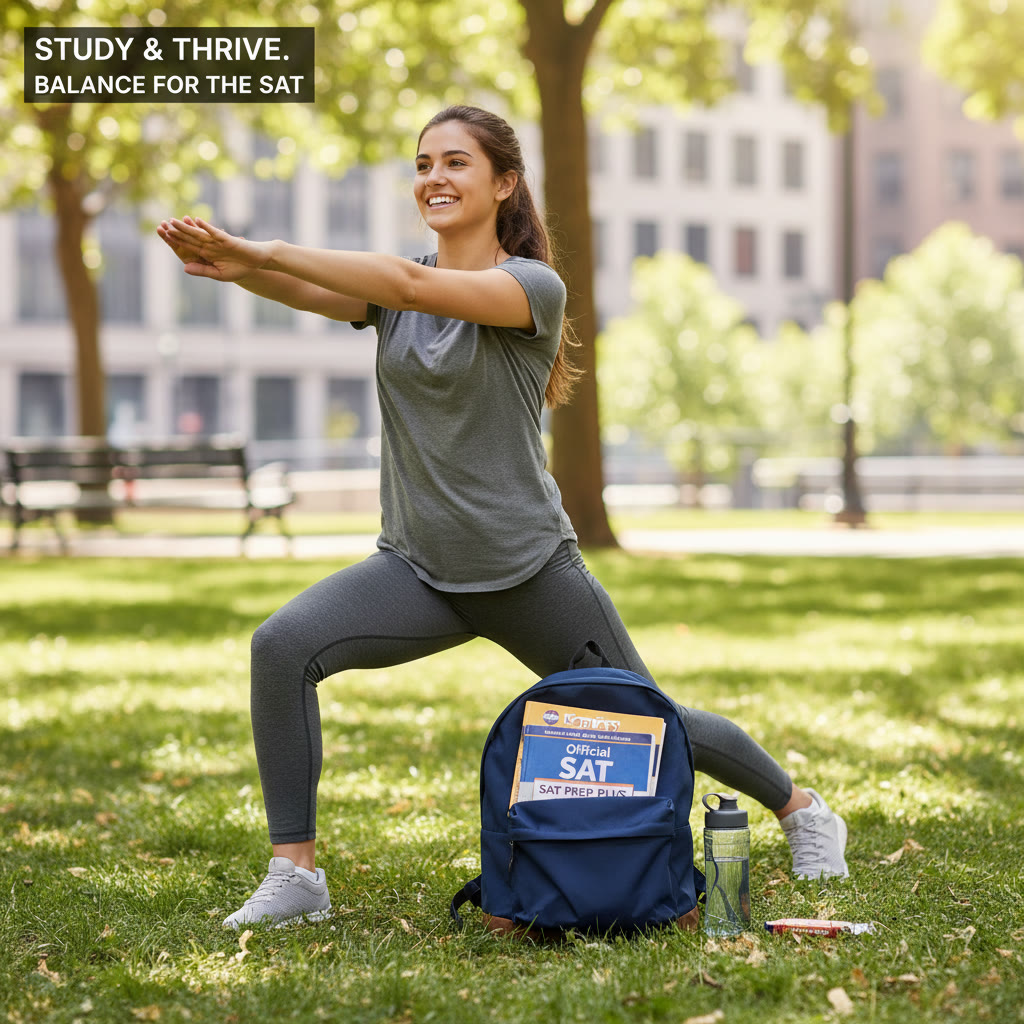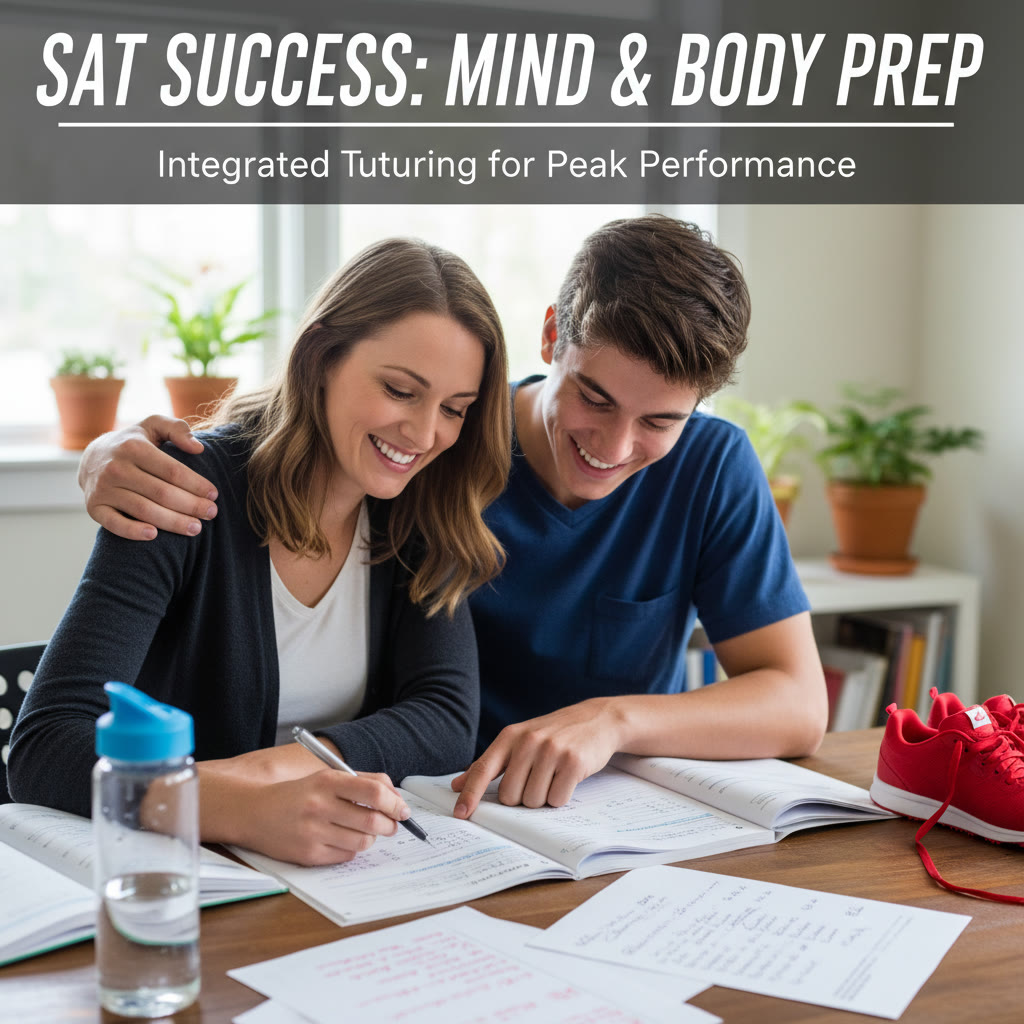Why Exercise Boosts SAT Performance: A Friendly, Science-Backed Guide
Think of studying for the SAT like tuning a fine instrument. You can buy the best sheet music, practice for hours, and still struggle if you show up tired, wired, or scattered. Exercise isn’t a magic shortcut to a higher score, but it’s one of the most reliable, underused tools for sharpening the mind, calming the nerves, and making study time far more efficient. This post unpacks the science in plain language, gives practical routines you can try today, and shows how to weave movement into an SAT study plan—so your brain is ready when test day comes.
The science behind movement and the brain
When people say exercise is ‘good for the brain,’ they aren’t speaking metaphorically. There are clear physiological and psychological mechanisms that explain why a brisk run, a quick HIIT set, or even a focused yoga session can make you think more clearly and remember more efficiently.
Blood flow, neurotransmitters, and BDNF: the triad that powers thinking
Physical activity increases blood flow to the brain, delivering oxygen and nutrients that neurons need to function well. At the same time, exercise stimulates the release of neurotransmitters—like dopamine and norepinephrine—that support attention and motivation. Perhaps most importantly, exercise increases levels of brain-derived neurotrophic factor (BDNF), a protein that supports the growth, survival, and plasticity of neurons. Think of BDNF as fertilizer for the brain: it helps develop stronger connections that make learning stick.
Acute vs. chronic effects
We can divide exercise effects into two useful categories:
- Acute effects — benefits that happen right after a single workout: improved alertness, better mood, and sharper focus for a few hours.
- Chronic effects — benefits from regular training over weeks and months: improved executive function, enhanced long-term memory, better sleep, and reduced stress reactivity.
Both matter for SAT prep: acute boosts help you get more out of a specific study session, and chronic benefits build the mental resilience and memory capacity you need over the long run.
How exercise helps the specific cognitive skills tested on the SAT
The SAT places a premium on reading comprehension, problem solving, time management, and the ability to stay calm under pressure. Here’s how regular movement specifically supports those skills.
Attention and sustained focus
Aerobic exercise raises levels of norepinephrine and dopamine—key chemicals for sustained attention. After a moderate workout, students often find it easier to avoid distractions and stay immersed in dense reading passages or multi-step math problems.
Working memory and mental manipulation
Working memory is your brain’s scratch pad—the place you hold and manipulate numbers or ideas while solving a problem. Exercise improves working memory by strengthening frontal lobe networks involved in planning and reasoning, which is exactly what helps when you’re juggling algebraic expressions or tracking details in a long passage.
Speed and cognitive flexibility
Tests like the SAT reward mental efficiency: spotting patterns, switching strategies when something isn’t working, and rapidly eliminating wrong answers. Exercise, especially activities that combine coordination and decision-making (like sports or fast-paced drills), improves processing speed and cognitive flexibility.
Stress, anxiety, and test-day nerves
Being calm is underrated. Two students with identical preparation may score differently because one can manage anxiety on test day. Regular exercise lowers baseline stress levels and trains the body’s stress response, making a racing heart before a tough math section easier to interpret and control.
Practical recommendations: what kind of exercise works best?
Not every workout is the same for cognitive benefits. Here’s a practical breakdown so you can choose activities that fit your schedule and preferences.
Aerobic exercise
Examples: jogging, cycling, brisk walking, swimming.
- Best for: attention, mood, and sustained cognitive benefits.
- Typical dose: 20–45 minutes at a moderate intensity, 3–5 times per week.
High-Intensity Interval Training (HIIT)
Examples: short bursts of sprinting, circuit training with short rests.
- Best for: quick acute boosts in alertness and processing speed. Useful when you need a short, powerful session before studying.
- Typical dose: 10–20 minutes (including warm-up and cool-down), 2–3 times per week.
Strength training
Examples: bodyweight exercises, resistance bands, weightlifting.
- Best for: long-term cognitive health and mood regulation. Strength work can increase confidence and provide variety in a weekly plan.
- Typical dose: 2–3 sessions of 20–45 minutes per week.
Mobility work and yoga
Examples: yoga, stretching, breathing practices.
- Best for: calming pre-test anxiety, improving sleep, and refining focus through breathwork.
- Typical dose: 10–30 minutes, any time—especially helpful the night before or the morning of the test.
Timing matters: when to exercise relative to study and test sessions
Knowing when to move can make your study sessions far more productive. Here are timing strategies that students find helpful.
Workouts before studying
Doing 20–30 minutes of moderate aerobic exercise before a study block can boost attention and help you encode new information. For example, a short run or bike ride before an afternoon math session often leads to cleaner focus and fewer re-reads.
Use mini-workouts as study breaks
Short bursts of activity during study—bodyweight circuits, a 3-minute jump-rope set, or a brisk walk—reset your attention and prevent mental fatigue. Pair them with a Pomodoro rhythm: 25–50 minutes of focused study, then a 5–10 minute movement break.
Gentle movement before the test
On test day, a light warm-up or breathing routine can settle nerves. Avoid intense workouts right before the test (they can leave you fatigued). Instead, try dynamic stretching and deep breathing to lower anxiety and prime concentration.
Sample weekly schedule: balancing study and movement
Here’s a realistic plan that balances SAT study blocks with exercise. Modify it based on your fitness level and availability. This table shows a simple, flexible pattern students can try during an 8–12 week study period.
| Day | Morning | Afternoon / Study Block | Evening |
|---|---|---|---|
| Monday | 20 min jog or brisk walk | 2 study blocks with a 10-min mobility break | Light stretching or 15-min yoga |
| Tuesday | 10 min HIIT (quick warm-up + 10 min sprints) | Practice SAT sections; 5-min active breaks | Review errors; short walk |
| Wednesday | Strength session (30 min) | Timed practice test or targeted math work | Deep-breathing routine before bed |
| Thursday | 30 min bike or swim | Reading comprehension + 10-min mobility | Light yoga or rest |
| Friday | 20 min brisk walk | Short mixed practice; Pomodoro with micro-exercises | Fun active hobby (team sport or dance) |
| Saturday | Longer aerobic (40–60 min) or hike | Full-length practice test (simulate test day); 10-min warm-up walk beforehand | Recovery stretches |
| Sunday | Rest or gentle yoga | Light review; plan next week | Early bedtime and sleep hygiene |
Study-break strategies: small movements, big returns
You don’t need a gym to get cognitive benefits. Small, frequent breaks beat long sedentary spells. Here are simple movement ideas you can slot between pages of a practice test:
- One-minute plank, 30-second rest, repeat twice: wakes up your system.
- 10–15 air squats or calf raises: increases blood flow and alertness.
- Three-minute brisk walk around the block: resets attention and reduces eye strain.
- Two rounds of box breathing (4 seconds in, 4 hold, 4 out, 4 hold): calms anxiety before a timed section.
Nutrition, sleep, and recovery: the rest of the package
Exercise is only one piece. Eating well, hydrating, and sleeping support the brain changes exercise creates. Think of them as partners in the same team.
Sleep
Deep sleep consolidates memory. When you study new material, a good night’s sleep helps lock it in. Exercise, especially earlier in the day, improves sleep quality. Avoid intense late-night workouts if they energize you and make sleep difficult.
Nutrition and hydration
Fuel matters. Stable blood sugar supports attention; dehydration makes thinking sluggish. Prioritize balanced meals with protein, healthy fats, and complex carbohydrates, and sip water through your study blocks.
Test-day routine: calm, alert, and ready
Test day is where practice meets pressure. A simple movement routine helps you arrive calm and alert.
Morning of the test
- Wake up early enough to avoid rushing.
- Do 10–15 minutes of dynamic movement: e.g., walking lunges, arm circles, light jogging in place.
- Finish with 2–3 minutes of deep breathing and a quick mental checklist of test strategies you’ve practiced.
Before you enter the test center
If you feel anxious, do a short breathing routine or a few neck and shoulder rolls. Keep movement gentle—you want steady energy, not that tired feeling that sometimes follows a grueling workout.
Real-world examples and comparisons
Imagine two students preparing for the SAT. One studies in 90-minute blocks with no breaks and long sedentary afternoons. The other breaks study into 40-minute sessions with 10-minute walks or mobility routines between blocks, plus three weekly 30-minute runs. They cover the same content, but the second student tends to be more alert in practice tests, less likely to get overwhelmed mid-section, and recovers faster after a difficult timed set. That practical difference—attention, mood, and recovery—adds up over months of prep.
Another comparison: a student who only uses caffeine to push through study marathons may get acute alertness, but often suffers from crashes and disturbed sleep. Replacing one of those late-night cram sessions with a brisk afternoon workout and a shorter, more focused study block often yields steadier, more productive learning.
How to combine exercise with personalized tutoring
Personalized tutoring makes study time more effective, and movement makes that time higher-quality. For students working with Sparkl’s personalized tutoring, a simple collaboration can be powerful: tutors can diagnose which cognitive skills need the most work (timed reading speed, algebraic manipulation, critical reasoning) and recommend when to schedule workouts to maximize acute benefits before focused sessions. Sparkl’s 1-on-1 guidance and tailored study plans can naturally include suggestions for which types of movement to pair with specific study goals, and expert tutors can use AI-driven insights to track when a student is most alert and adjust timing accordingly.
Practical checklist to get started this week
- Pick one aerobic activity you enjoy—walking, cycling, or jogging—and commit to 20–30 minutes three times this week.
- Use a Pomodoro rhythm: 45 minutes study, 10 minutes movement—try it for two days and note how your focus changes.
- Schedule a longer aerobic session on the weekend before a full-length practice test to simulate a rested, ready brain.
- Try a pre-test 10-minute gentle yoga routine to calm nerves the evening before a mock test.
- If you have a tutor (or are considering one), ask them to incorporate movement timing into your study calendar for better microplanning.
Quick FAQ
Q: Will exercise alone raise my SAT score?
A: No—exercise isn’t a substitute for deliberate practice. But it makes your study sessions more effective, helps you retain information, and reduces test anxiety. In other words, it amplifies the value of the work you’re already doing.
Q: What if I’m short on time?
A: Short, high-quality sessions work. Ten minutes of HIIT or a brisk 15-minute walk between study blocks yields measurable acute benefits. The key is consistency—small, frequent movements beat rare marathon workouts.
Q: Can I exercise right before the test?
A: Keep it light. A short walk, mobility routine, or breathing practice is great. Avoid anything that leaves you exhausted or shaky.
Wrapping up: movement is study power
Preparing for the SAT is a marathon of focus, memory, and calm under pressure. Exercise is not an add-on; it’s a multiplier. It helps you learn more efficiently, manage anxiety, and bring your best self to each practice test and the real day. The good news is you don’t need an elaborate plan: a mix of regular aerobic sessions, short movement breaks, and a calming pre-test routine will materially improve how you study and perform.
If you want a study plan that truly fits your life—one that blends targeted SAT practice with smart movement timing and sleep and nutrition guidance—consider integrating your routine with Sparkl’s personalized tutoring. Tutors there can tailor study blocks, recommend the best types of exercise for your cognitive goals, and use individualized insights to help you peak when it matters most.
Start small this week. Take a 20-minute walk before your next study session, try a 5-minute mobility break after each practice section, and notice how your concentration shifts. Over weeks, those little choices compound into clearer thinking, better memory, and a calmer test day. You’ve got the content knowledge—now give your brain the physical edge to perform at its best.























No Comments
Leave a comment Cancel